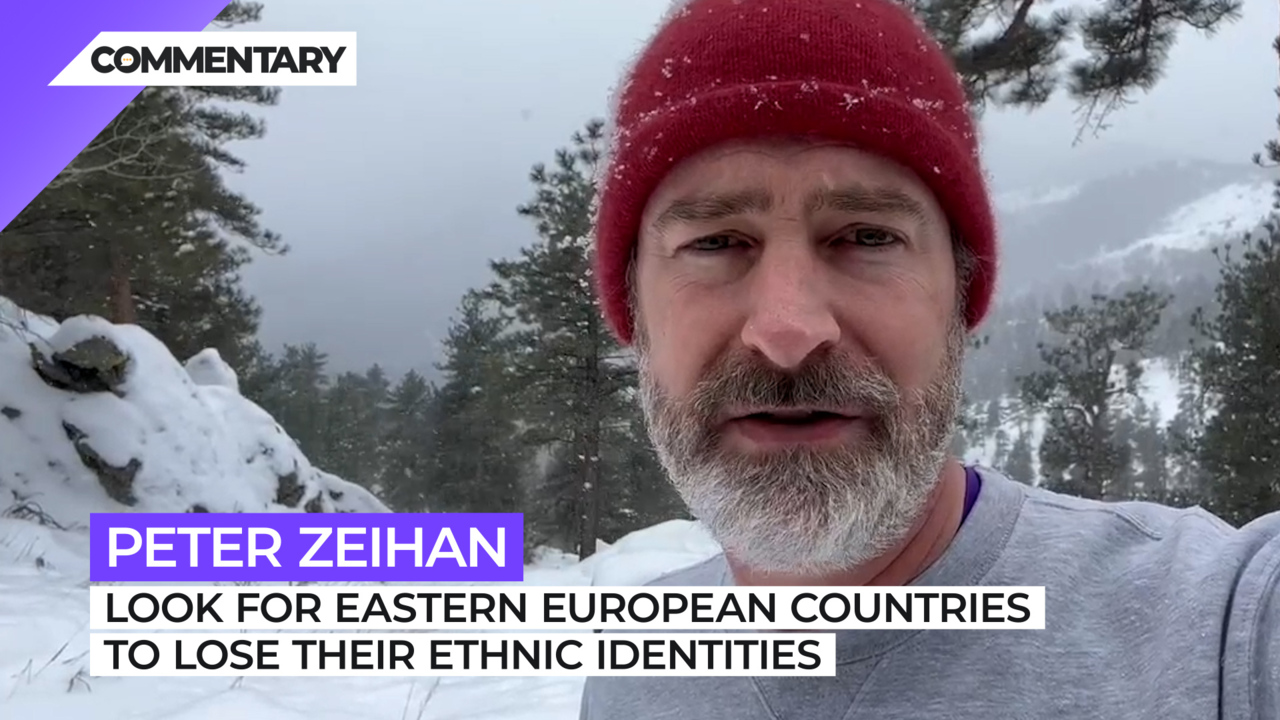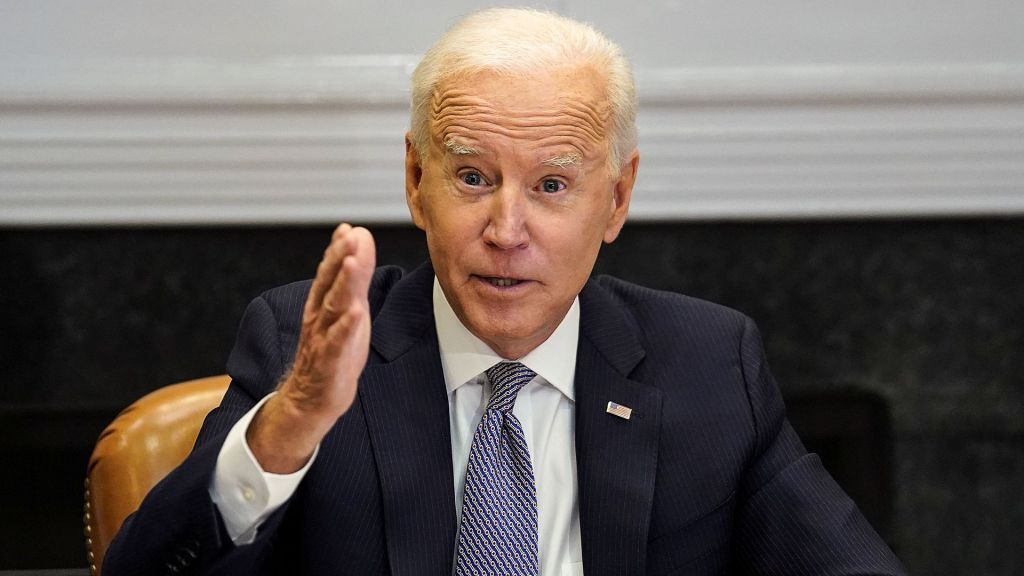
Commentary
-
Our commentary partners will help you reach your own conclusions on complex topics.
Hey everyone, Peter Zeihan here coming to you from snowy Colorado where, as promised, we’re going to be talking about the next chunk of our demographic series, specifically talking about the Orthodox Christian world which is a huge swath of territory, stretching from Russia to Belarus and Ukraine and Moldova, Bulgaria, Romania, and Serbia. Now, these countries have three characteristics in common that have really shaped their demographic destinies, and none of them have been great.
The first is broad scale economic dislocation. These were the parts of the former communist world that didn’t do well, even at the height of communism. They weren’t very advanced, and especially when the post cold war system erupted. They didn’t have anything really to contribute aside from raw commodities, their industry was outdated, they weren’t producing steel, like the Czech Republic, or it stuff like the Latvians, they were only doing grains, and raw materials and energy. And you can get growth from that you can get wealth from that you can get infrastructure and development from that. But unless it is really, really well managed, the population just doesn’t see a whole lot of it. So these countries were in and out of horrible recessions for really 30 years. It’s less bad in places like Romania and Bulgaria, because they did ultimately get into the EU in the late 2000s. But they were the last ones in line. Serbia took kind of a double hit, because they don’t have a lot of raw materials that we can export to the world. And in the aftermath of the NATO bombings in the Yugoslav Wars in the early 1990s. Serbia never moved on. So even with the Russians, under Putin going from win to win in terms of global policy and generating a lot of income from oil. In Serbia, there was a whole lot of nothing. And politics basically became locked down in the aftermath of the Yugoslav Wars. And the country really was never able to advance whatever is next. And that holds true even today.
Okay, what’s second, because of the economic dislocation, because so many people didn’t see a lot of opportunity. You had huge emigration from all of the states, mostly to Western Europe, some to the United States and Canada. In the cases of Romania and Bulgaria, once they got into the EU, if anything, the out migration accelerated because there are then fewer restrictions, the Russians easily lost 10 million people in the 1990s and early 2000s to the wider world. In the case of Moldova, perhaps as much as one quarter of the female population under age 50 left never to return. Some of them going a lot of them going into the sex trade, because there really wasn’t a lot of an option, because education and Moldova during the Soviet periods was even very low. Serbia is probably the country that has suffered the most from this out migration, because again, the government just has never moved on. And there’s never been a plan economically for what’s next.
The third one kind of flies under the radar, and it’s probably going to piss a few people off. But here we are. Birth control in this region, the primary method is abortion. So on average, more than seven out of 10 pregnancies across the space are terminated. And if you have a one abortion, I know I’m a dude, I really have no right to say this. But you know, I’m gonna go out on a limb and guess that it’s not critical to your health. But if you have 10, you’re probably endangering your future fertility. So between a very low death rate, a very high abortion rate and very high infertility rates because of that weird intersection of health care, and birth control and economic collapse. It’s arguable that a lot of these countries probably Russia right at the very top of that list, simply could not repopulate even if the economic conditions were to turn around. So this is the part of the world that is duking it out with Northeast Asia for the lowest birth rates and the fastest national mortality if that’s the right term in the world. So that’s kind of the overview. Those are the three big issues that shaped the region as a whole, but we knew need to give additional attention to the Russians and the Ukrainians. Now the Russians have had a series of stacked geopolitical disasters, World War One World War Two, Stalin’s famines, Brezhnev’s mismanagement, Khrushchev’s mismanagement, and then the post war, cold post cold war collapse, all these kind of stacked on each other. And so that the current generation that is now in their 20s is the smallest one they’ve ever had. The Russians say they’ve got a metric but ton of teenagers and that the demographic turn has been made and they’re going to be fine. If they are telling the truth about that, that would be the only other data that they’re telling the truth off more likely that we actually have fewer teenagers than 27 means, you’ll see that in the demographic graphic that we’ve patched into the show. More likely their data is more similar to the situation in Ukraine, when we’re thinking about the Russian demographics, they’re not equal, just as in the United States, where places like Utah or Texas have higher birth rates in places like New York, or Connecticut, because they’re less urbanized or have different cultural norms. The same is true in Russia. Russia is not just Russian, the Russian state was originally founded mirror on Moscow, and they discovered that they really had no borders that were secure. So the way they decided to deal with that was to expand, conquer all their neighbors, consolidate and expand again, conquer all of those neighbors, and so on, and so on, and so on until they get to the Russia that we more or less know today. And during the Soviet period, that means that there are dozens of conquered peoples living within the Russian system.
Some of them have demographic stats that are just as bad as the Russians, but not all of them. A lot of the Turkic minorities, most notably the Chechens, the Daghestan, ease the Bashkirs, and the totters actually have very robust demographic structures and are doing very well from a health and a growth point of view. Well, the last decent number that we’ve got from the Russians was done by the 1989 Soviet census.
And at that point, the best guess Soviet numbers, after all, was that 20% of the Russian population within the Russian Federation was non Russian. So 80%, Russian 20%, non Russian? Well, folks, that was over 30 years ago, it’s probably closer to 25 to 30%.
Today, that’s non Russian. And if you fast forward another 20 years, you’re talking about probably 30 to 35%. Now, these are all guesstimates upon guesstimates because this is Russia and getting good data is next to impossible even before there was a war. But we do know for sure that even if you include all of the minorities, the Russians only have 8 million men aged 20 to 36 months from now at least a million of those are going to be committed to the war in Ukraine, we already have over 100,000 dead, we already have about a million who have fled the country. So one way or another, the Ukraine war is the last conventional war that the Russians are ever going to be able to fight because they simply won’t have enough people. Now the Ukrainians have no reason to lie about their demographic data, aside from the fact that it’s absolutely atrocious. And if you look at it, and you look just the collapse from the 50s, to the 40s, to the 30s, the 20s of the teens, the kids, you’ll notice that this isn’t just a demographically spent country. This is a demographically dissolving country. So unfortunately, even if the Ukrainians achieve runaway success in this war this year, it’s already too late, even before the Russians started kidnapping children in the 1000s, perhaps hundreds of 1000s from Ukraine. This was a country that simply didn’t have enough people under aged 40 to even theoretically repopulate themselves.
So within 20 or 30 years, we are looking at the Ukrainian ethnicity vanishing from this world, and probably the Russian ethnicity no more than 20 or 30 years behind that. Like I said they are duking it out with Northeast Asia to see who vanishes faster, which means we have to turn to Northeast Asia next, because that is going to be the part of the world where from an economic point of view, these demographic turnings have the greatest impact. Okay, take care. Until next time,
-
Water wars are an unlikely future
Foreign policy writers have long warned of the possibility that clean drinking water might become “the next oil” — that is, that major wars might be fought around the globe over access to potable water. With expanding populations and finite water supplies, these critics argue that humans will inevitably fight each other to secure drinking…
-
Are Russia’s hypersonic missiles too good to be true?
Russia has reportedly used five of its new hypersonic Zircon missiles to target Kyiv since the beginning of 2024. Russia claims that these sea-based missiles, boasting a range of 625 miles and capable of traveling at nine times the speed of sound, are part of its family of “superweapons” aimed at penetrating the U.S. missile…
-
Norway sending F-16s to Ukraine
In recent months, the need for Ukrainian air defenses has grown more urgent. As U.S. aid is unable to pass through Congress, Ukraine’s European allies have been stepping up to provide what they can. Norway is now the latest nation to pledge F-16s to Ukraine, not only to defend Ukrainian airspace, but also for the…
-
Russians targeting civilian emergency crews in Ukraine
Russian forces are applying a brutal tactic in their war on Ukraine. The tactic, “double tap,” includes an initial strike on a specific civilian target of some value, followed by a second strike intentionally designed to kill the emergency first responders, medical staff, firefighters, and other key personnel dispatched to the location of the first…
-
Iranian strike on Israel not intended to provoke regional war
Rising tensions in the Middle East boiled over again on Saturday, April 13, when Iran launched a direct attack against Israel with over 300 combined armed drones, ballistic missiles and cruise missiles. The attack follows decades of simmering conflict between the two nations, amplified most recently by Israel’s invasion of Gaza and a strike on…
Latest Stories
-
 AP Images
AP Images
Argentina asks to join NATO as Milei looks to enhance security, strengthen ties
-
 Getty Images
Getty Images
Utah students protest 'furries,' school admin deny problem
-
 Reuters/Jane Rosenberg
Reuters/Jane Rosenberg
Trump’s ‘hush money’ trial: Legal experts debate name coined by media.
-
 AP Images
AP Images
Black Chicagoans feel neglected as millions funneled to migrant crisis
-
 Envato
Envato
Congress wants to curtail ‘judge shopping.’ Can it act before the election?
Popular Opinions
-
In addition to the facts, we believe it’s vital to hear perspectives from all sides of the political spectrum.
Latest Opinions
In addition to the facts, we believe it’s vital to hear perspectives from all sides of the political spectrum. We hope these different voices will help you reach your own conclusions.
The opinions published in this section are solely those of the contributors and do not reflect the views of Straight Arrow News.

















Latest Commentary
We know it is important to hear from a diverse range of observers on the complex topics we face and believe our commentary partners will help you reach your own conclusions.
The commentaries published in this section are solely those of the contributors and do not reflect the views of Straight Arrow News.
Peter Zeihan
Geopolitical StrategistAre Russia’s hypersonic missiles too good to be true?
Norway sending F-16s to Ukraine
Russians targeting civilian emergency crews in Ukraine
Dr. Frank Luntz
Pollster and Political Analyst‘Take the job seriously’: Why Americans are fed up with Congress
‘If we can shrink it, it will stop growing’: Americans talk debt, deficit
‘I don’t think they care’: Undecided voters explain their reasons
Pete Ricketts
U.S. Senator for Nebraska